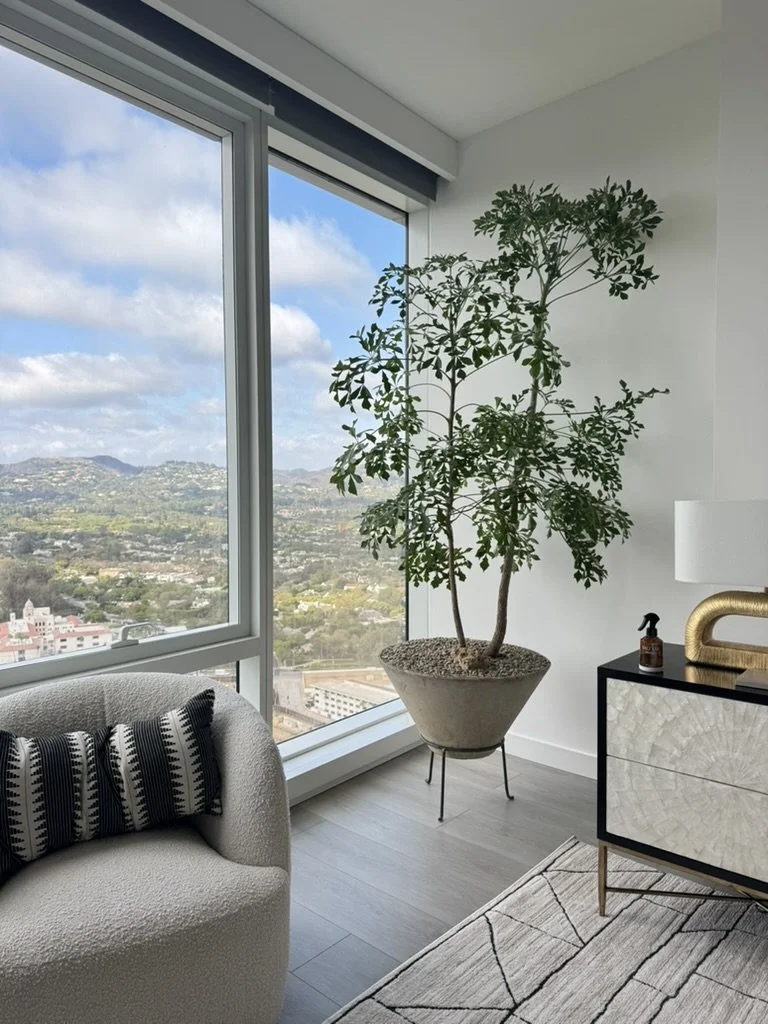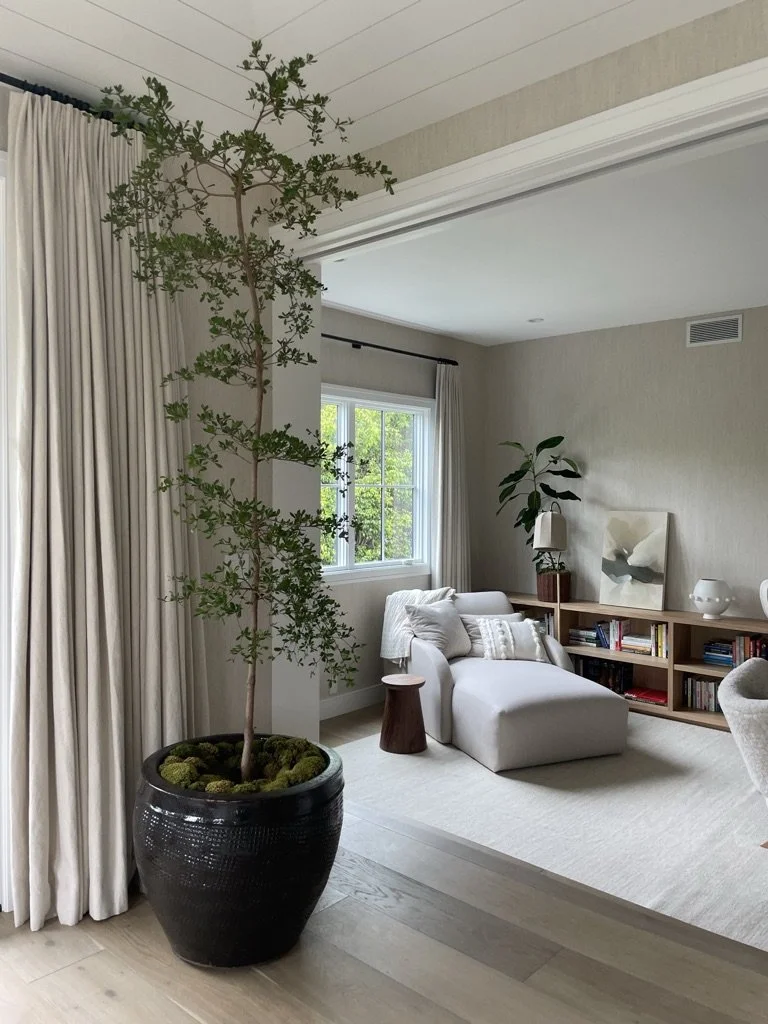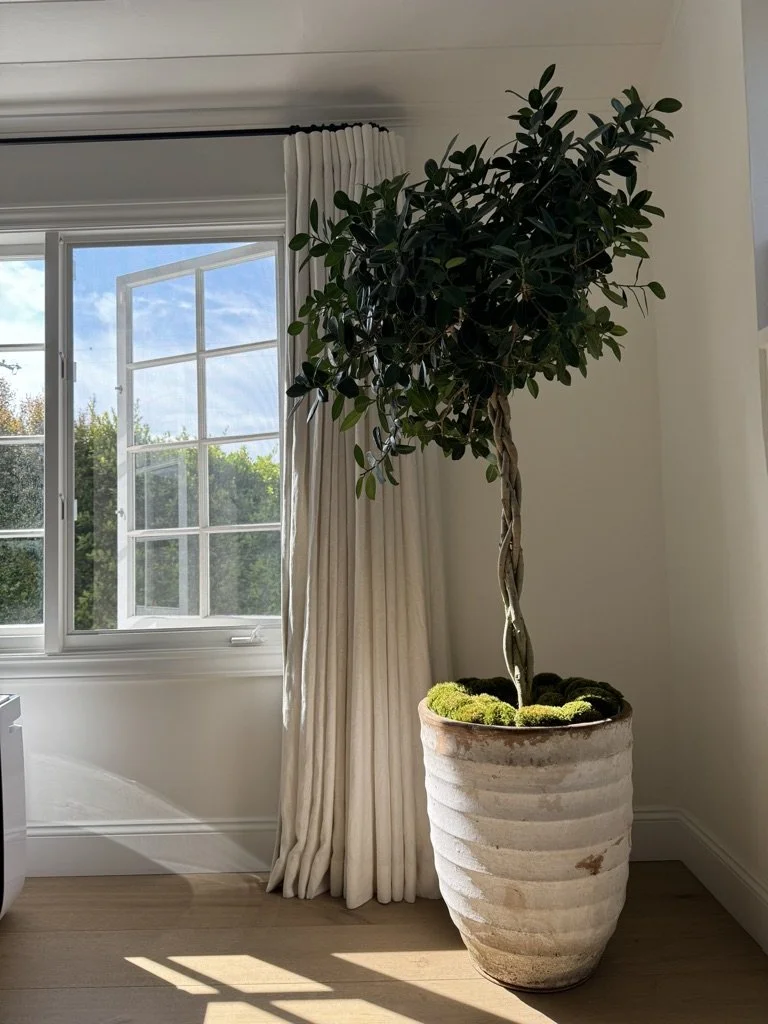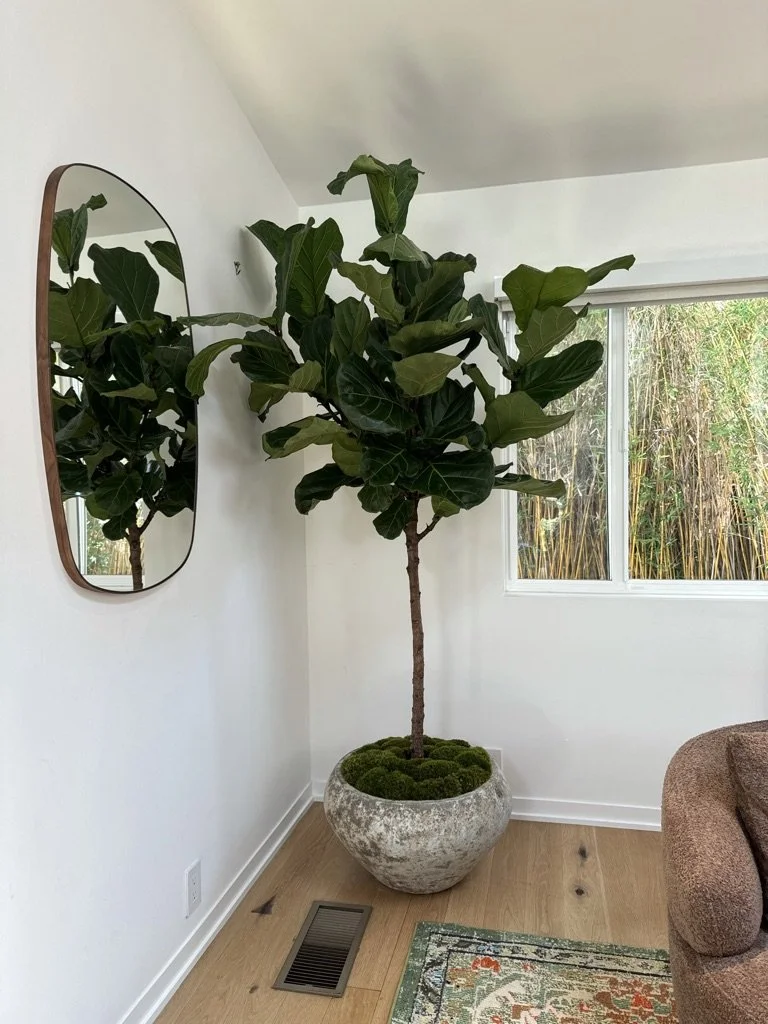How Airflow Can be a Game Changer for Your Houseplants
Have you ever noticed your indoor plants looking a little limp, developing brown edges of the leaves, or getting mold on the surface of the soil? Well, poor air circulation may be the unexpected offender. Air movement around plants plays a crucial role in their overall health, and with a few adjustments you can help your plants thrive.
Plants take in carbon dioxide through tiny pores on their leaves, called stomata, to photosynthesize. During this process, they use light to convert carbon dioxide and water into the sugars that fuel growth, while releasing oxygen back into the air, a win-win for you and your plants. Plants also “breathe” through cellular respiration, breaking down those stored sugars for energy to maintain healthy roots, stems, and leaves.
When air becomes stagnant, this exchange of gases slows down. Carbon dioxide levels drop, oxygen builds up around the leaf surface, and moisture lingers in the soil. Over time, this can suffocate roots, encourage mold, and lead to a sluggish, stressed plant. Think of it like this: plants need fresh air in much the same way people do. Without it, their “lungs” can’t function efficiently.
The easiest way to avoid stagnation is to give plants enough breathing room and avoid overcrowding. Even shifting your arrangements slightly can make a noticeable difference. Good airflow encourages steady gas exchange, helps excess moisture evaporate, and keeps the soil surface dry, making it less appealing to pests and fungi.
Temperature and humidity are regulated by airflow in the home or office. Whether the area is being cooled by an air conditioner, heated by a furnace, or even just warmed by the sunlight, there can be hot or cold pockets that linger and stress plants. Excessively humid and still air provokes fungal growth and root rot, and in contrast, excessively dry air can cause leaves to dry out and drop or turn brown at the edges. Fans can circulate a room while open windows encourage fresh air into the space. Good airflow strikes a balance between temperature and humidity, prevents overheating, and protects foliage.
Fans can help boost your plant’s mood in still office air.
Seasonal changes are an important time to consider the quality of air circulation. They can often force us to switch on heaters or seal windows, creating a shift in the plant’s environment. Here are some things to consider as temperatures drop:
Heaters can make plants more comfortable by warming a room considerably, however, they also strip away important moisture and humidity.
You’ll want to keep plants away from direct exposure to heaters and radiators to prevent scorching.
Signs to look out for include dehydrated, droopy leaves, crispy edges, yellow and brown discoloration, or stunted growth and dropping leaves.
Introducing a humidifier or occasionally misting the plants is an excellent way to avoid an ailing plant in the colder months.
Air circulation might not be your first thought when it comes to plant care, but it certainly is essential. By fine-tuning ventilation, adjusting for seasonal heating or cooling, and giving plants some breathing room, you can create an environment amongst your plants that can do wonders for their prosperity.








